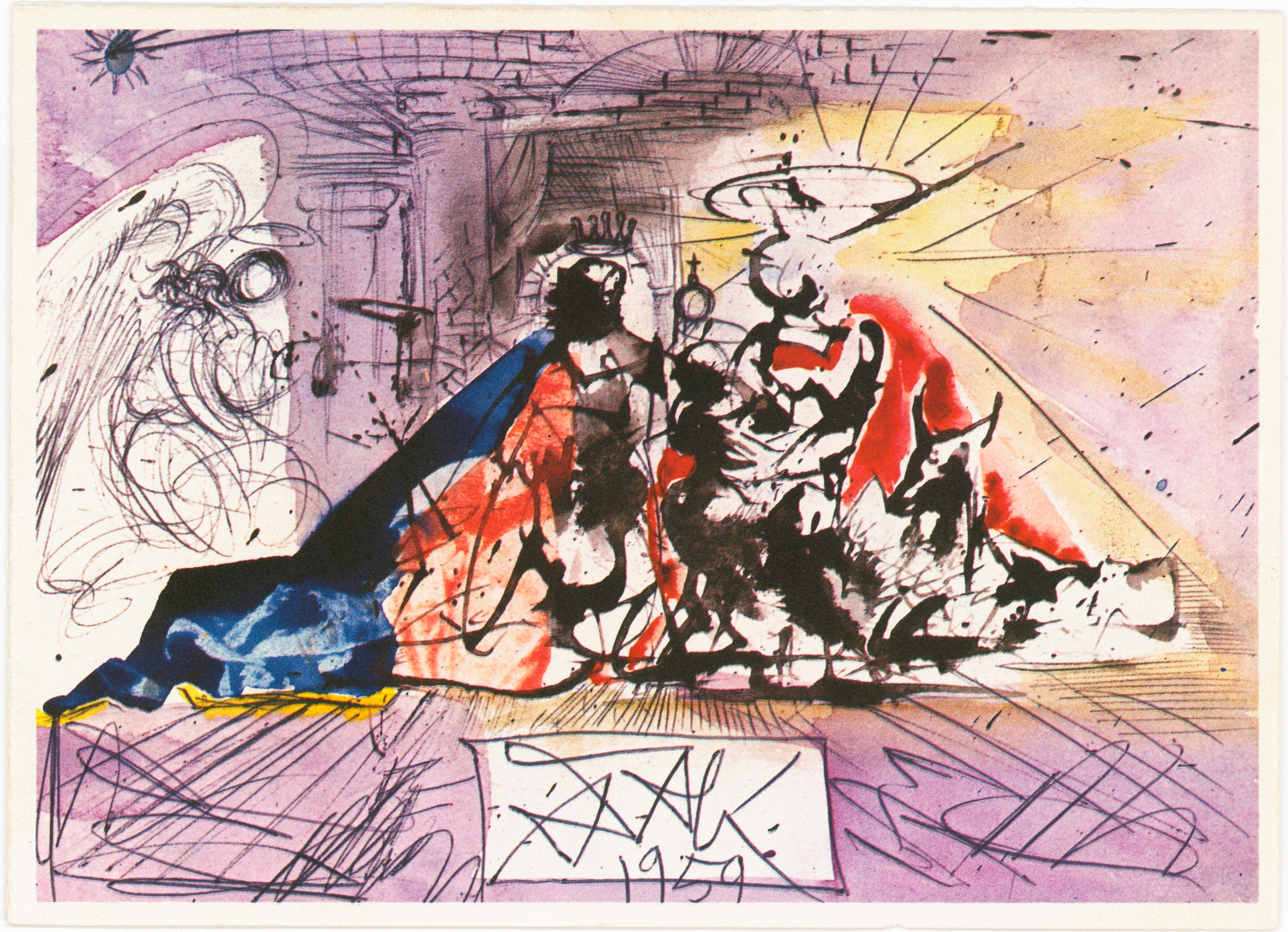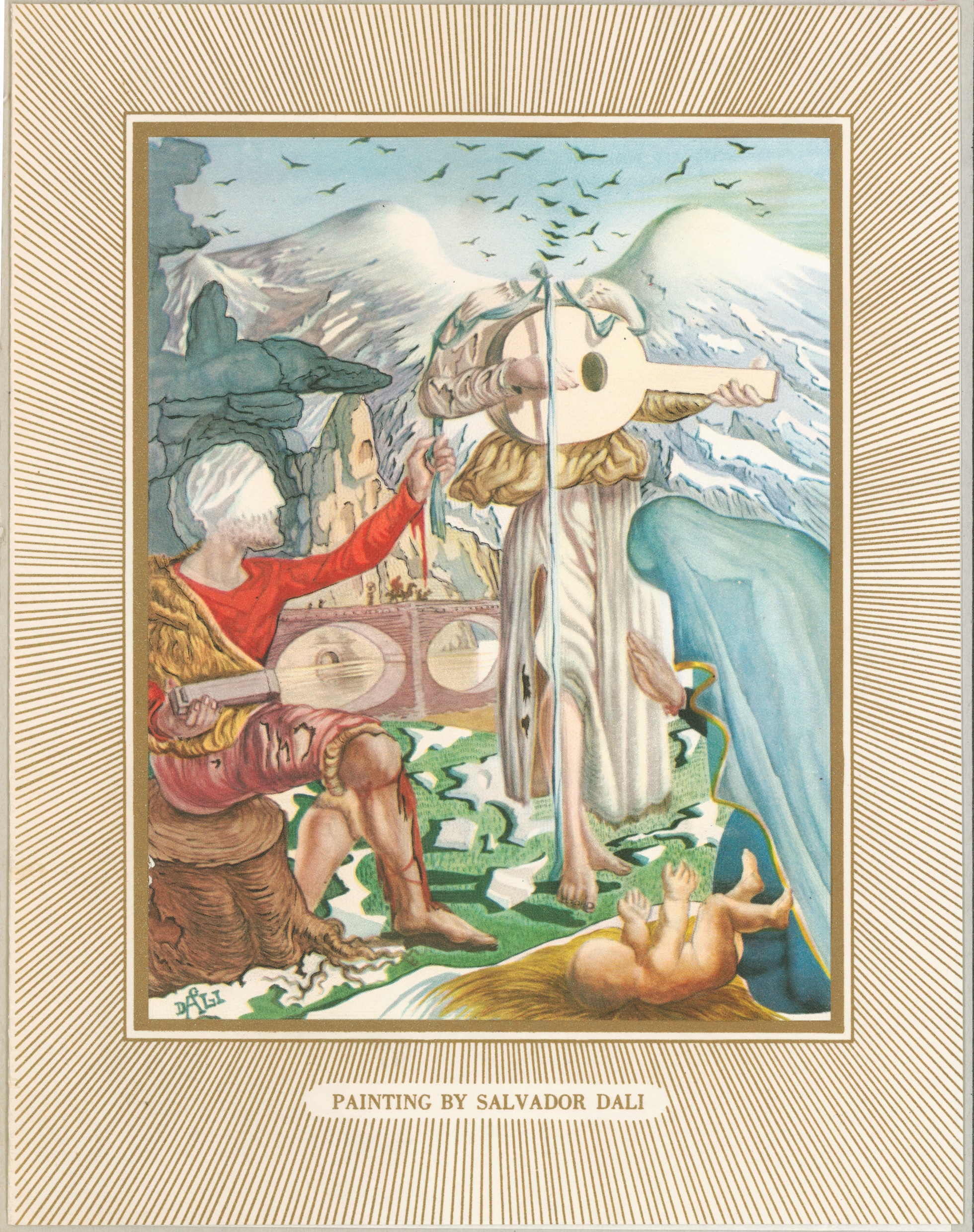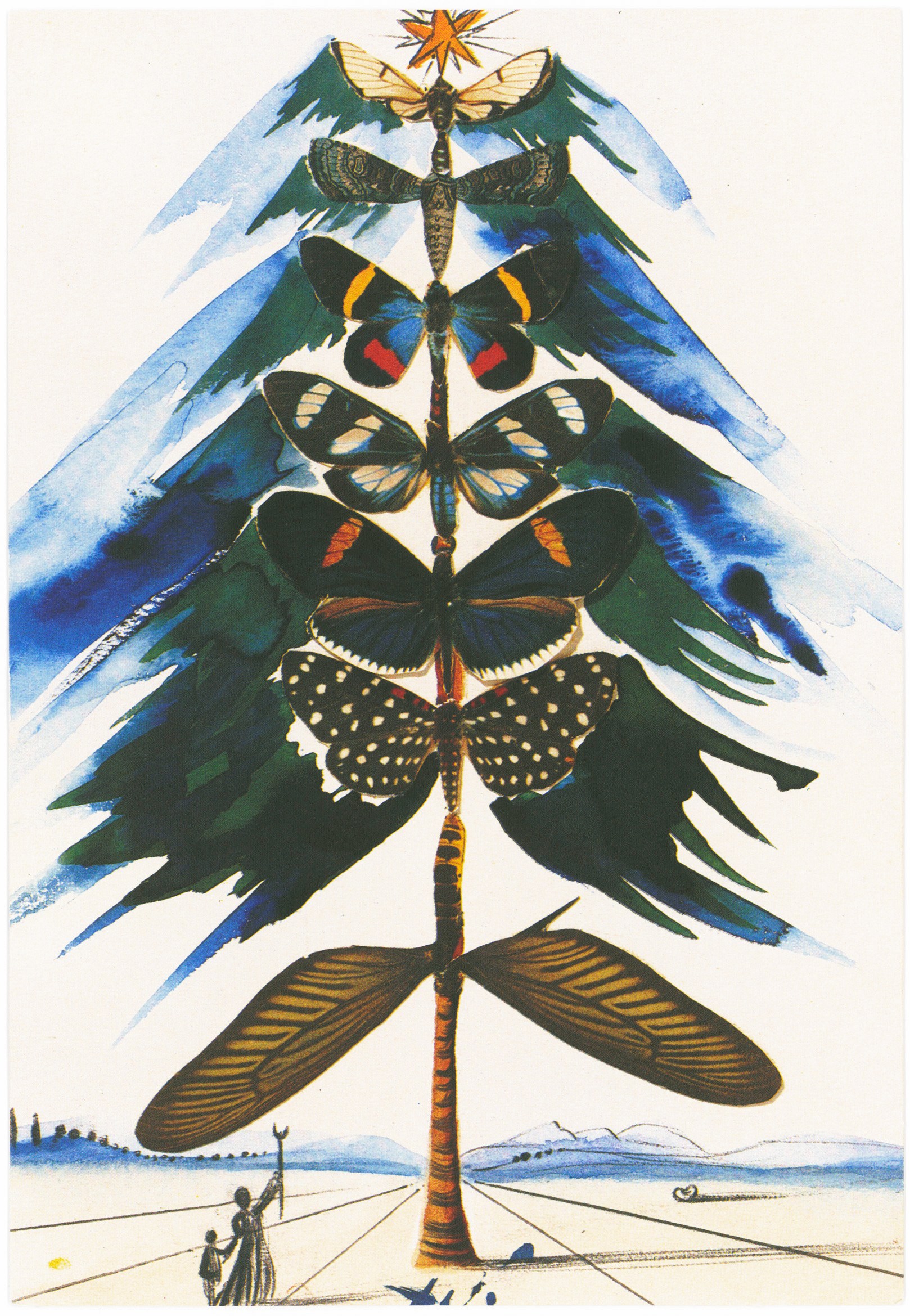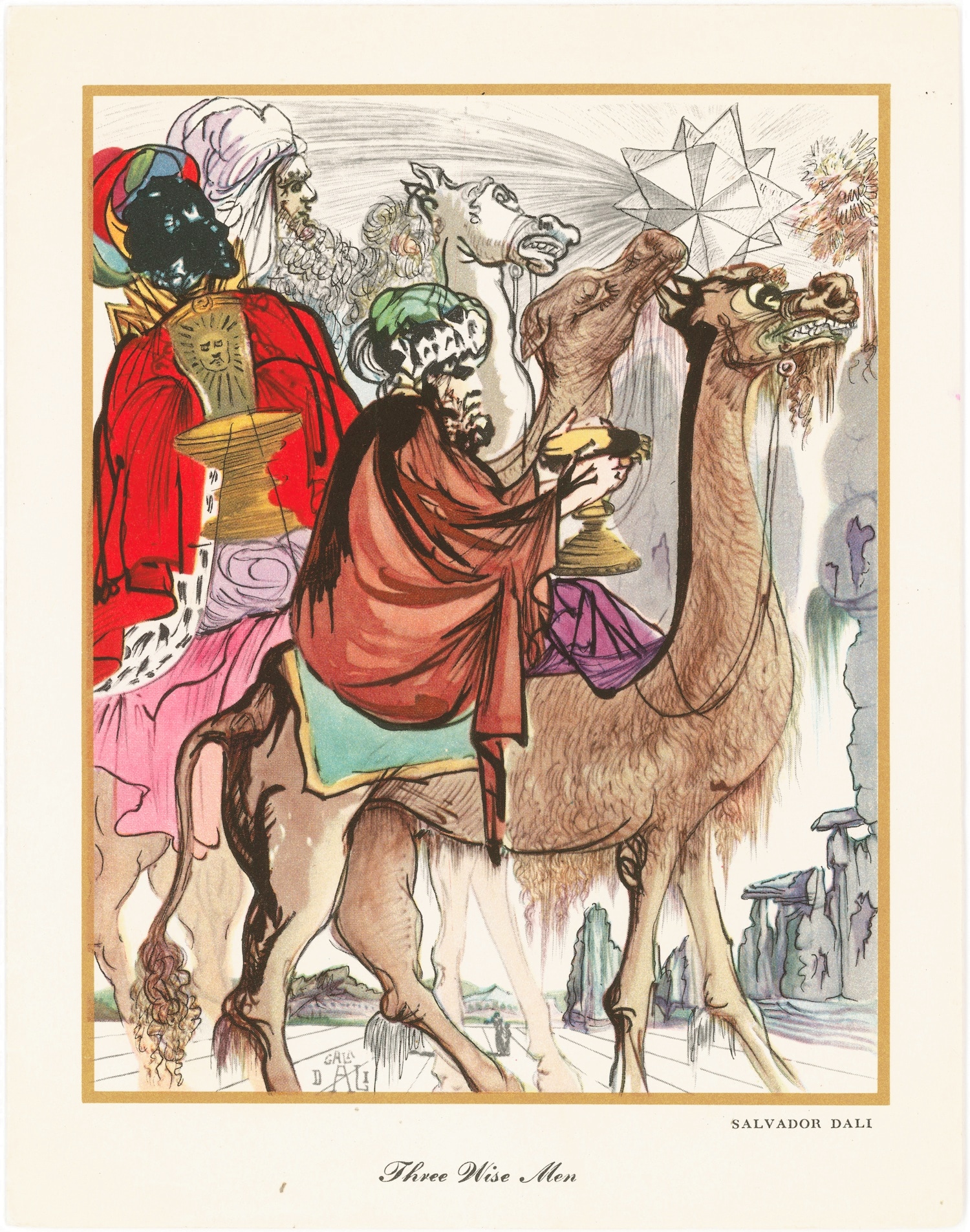
The nature of marketing in the nearly-over 2010s, with all its unexpected brand crossovers and collaborations, gave rise to many strange commercial bedfellows. But for sheer artistic shock value, did any of them surpass Christmas of 1960, when Salvador Dalí designed holiday greeting cards for Hallmark? It was the rare intersection of the kind of company that has built an empire on broadly appealing, inoffensive expressions of love and festivity and an artist who once said, “I don’t do drugs. I am drugs.”

“Hallmark began reproducing the paintings and designs of contemporary artists on its Christmas cards in the late 1940s, an initiative that was led by company founder Joyce Clyde Hall,” writes the Washington Post’s Ana Swanson.
“The art of Pablo Picasso, Paul Cezanne, Paul Gauguin, Vincent Van Gogh and Georgia O’Keeffe all took a turn on Hallmark’s Christmas cards.” And so, Swanson quotes Hall as writing in his autobiography, “through the ‘unsophisticated art’ of greeting cards, the world’s greatest masters were shown to millions of people who might otherwise not have been exposed to them.”

Hallmark signed Dalí on in 1959. The painter of The Persistence of Memory and Crucifixion (Corpus Hypercubus) asked the greeting-card giant for “$15,000 in cash in advance for 10 greeting card designs, with no suggestions from Hallmark for the subject or medium, no deadline and no royalties.” The designs Dalí came up with included “Surrealist renditions of the Christmas tree and the Holy Family,” as well as some “vaguely unsettling” images, such as a headless angel playing a lute and the three wise men atop some insane-looking camels. Ultimately, Hallmark only produced two of the Dalí cards, a nativity scene and a depiction of the Madonna and Child. Alas, even those relatively tame images didn’t go over well.

Dalí’s “take on Christmas,” as Patrick Regan writes in Hallmark: A Century of Caring, was “a bit too avant garde for the average greeting card buyer,” and the negative public response soon convinced Hallmark to drop Dalí’s cards from their product line — thus ensuring their future as sought-after collector’s items. As inauspicious as the marriage of Dalí and Hallmark might seem, the artist did possess a commercial sense more in line with Joyce Clyde Hall’s than not: in his lifetime Dalí created a range of products ranging from prints to books (including a cookbook) to tarot decks, and even appeared in television commercials. Not all of his ventures were successful, but as with his Hallmark Christmas cards — about which you can learn more at the site of Spanish language and literature professor Rebecca M. Bender — sometimes the failures are more memorable than the successes.
The images above come courtesy of the Hallmark Archives.
Related Content:
John Waters Makes Handmade Christmas Cards, Says the “Whole Purpose of Life is Christmas”
Watch Terry Gilliam’s Animated Short, The Christmas Card (1968)
Salvador Dalí Goes Commercial: Three Strange Television Ads
Salvador Dalí’s 1973 Cookbook Gets Reissued: Surrealist Art Meets Haute Cuisine
Based in Seoul, Colin Marshall writes and broadcasts on cities, language, and culture. His projects include the book The Stateless City: a Walk through 21st-Century Los Angeles and the video series The City in Cinema. Follow him on Twitter at @colinmarshall or on Facebook.


Dali also produced a circular jigsaw puzzle for Springbok puzzles which was acquired by Hallmark.
gutsy!
The article was well-written and covered much information about the famous surrealist artist Salvador Dali.I myself have been successful surrealist artists melded with science technical art in astronomy, and published in NASA websites.
What I found even more and further impressive were the links within this site to Openculture and online accessible Kindle books of many clasics entirely in PDF and free readable format. Hundreds if not more, perhaps thousands. Then I forgot how I navigated through to find a particular book about the North American continent and culture written in 2001. I was hoping that someone here could explain how to get back to these Kindle books links to read in PDF format here for free. This is really a great thing that your site is offering, as I want to share it with my friends and let them know about it.
Thanks for any further information as to how to click through to the free Kindle books. I took several screenshots of the opening title and contributors to the book I was interested in, but I can’t figure out how to get back here in the site as to where I entered that point for the Kindle Books.
What a great article, I’m really glad I stumbled across it as I found it to be really informative. A good article about the famous surrealist artist Salvador Dali is not that easy to find but I’m amazed at how you touched on all the corners and how brief and to the point it was. The collection has such appealing painted cards. I highly recommend checking out for greeting cards, as I’ve used them on several occasions and the cards they produce are really unique and also customised in 3d. So if you want to gift a birthday card to your friends, loved ones or even just for yourself, I can assure you these greeting cards will keep your long-lasting memories alive with the clever lenticular lens they use.